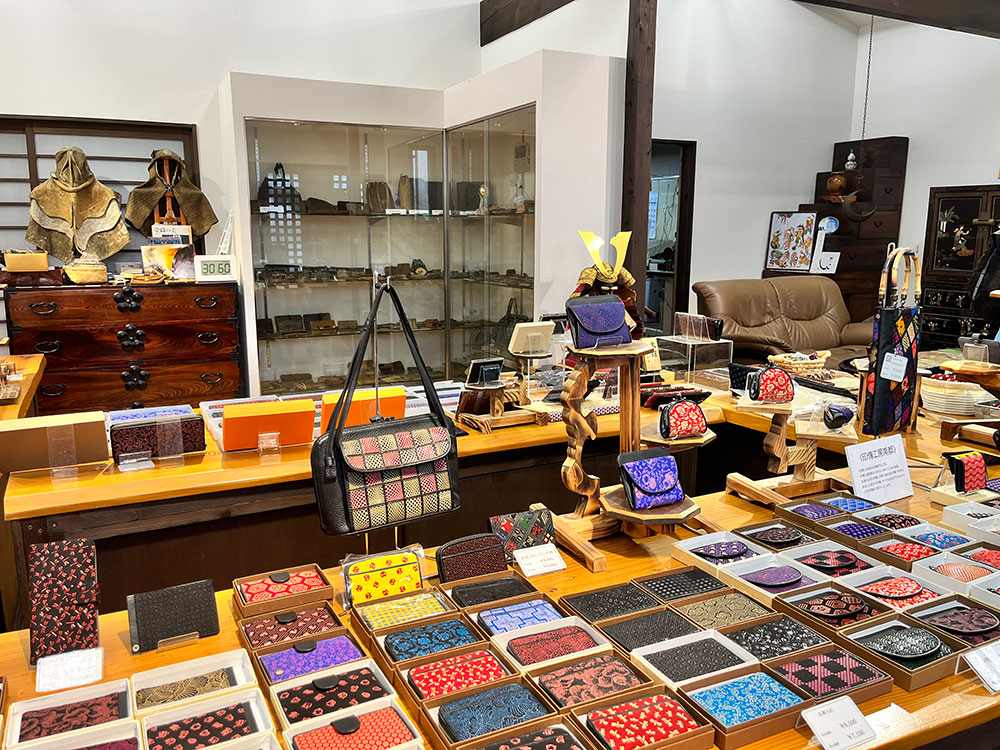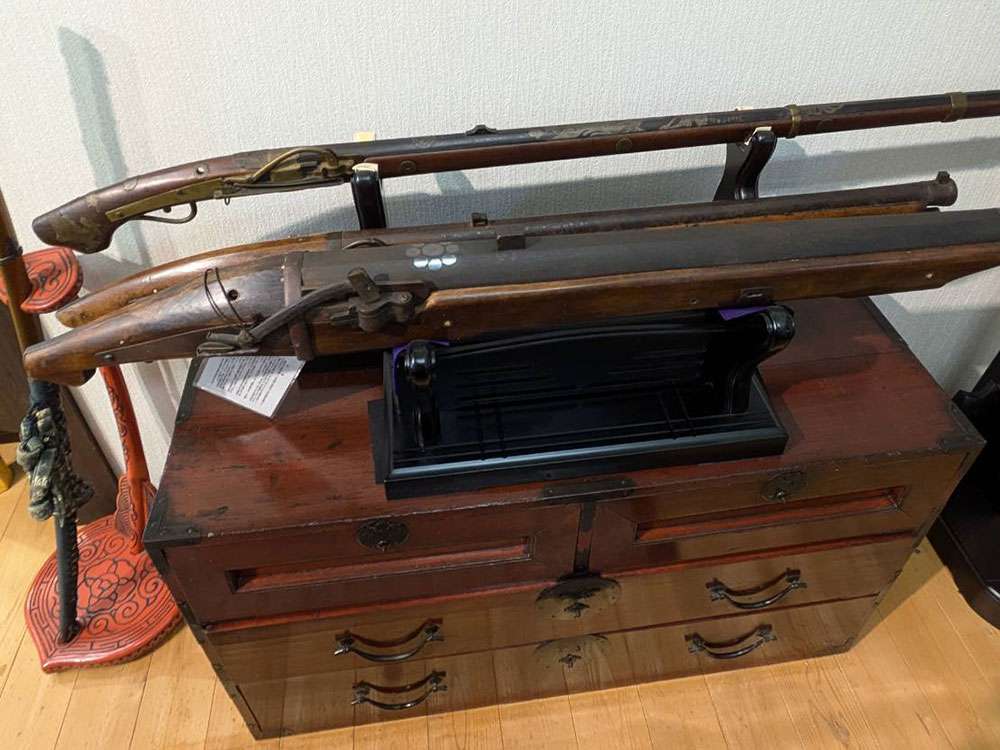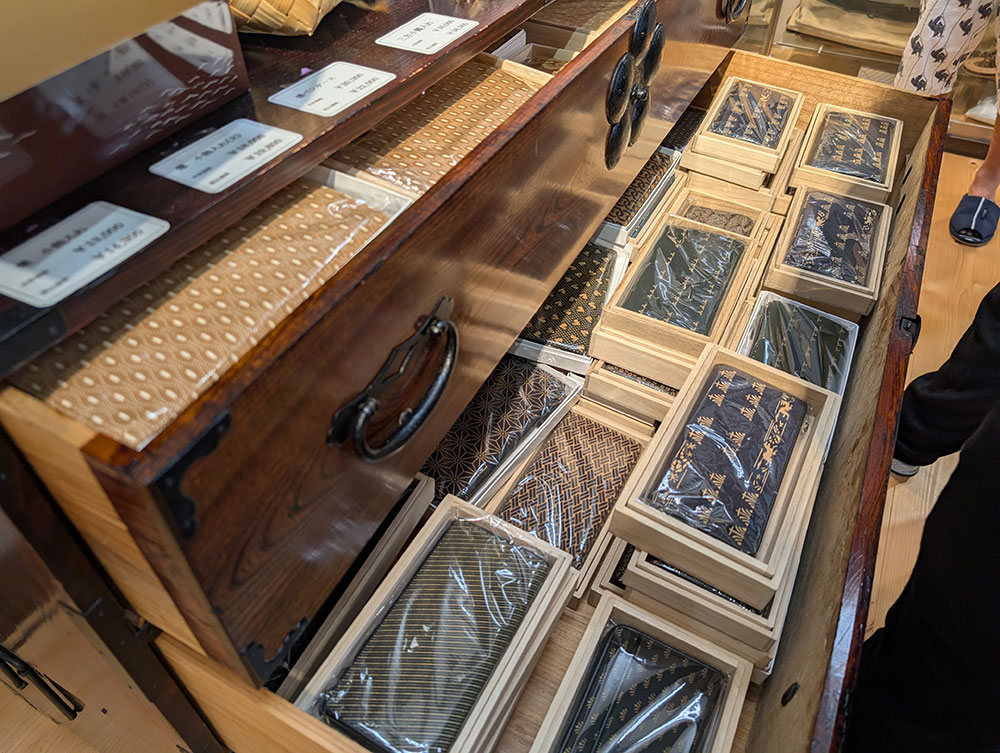Unique Japanese Crafts and Gifts from East Nara Nabari
As a CIR (Coordinator for International Relations) my main duty is to foster and promote relations between Japan and my home country, but in order to do this properly I need to have a deep understanding of Japan. Just as New Zealand culture has more to it than just sheep and rugby (even if those aspects are great), Japanese culture also has many fascinating parts that I have the great fortune to experience and in turn showcase some of the lesser-known aspects of Japanese arts, lifestyle and culture. This time I, along with Mr. Gavin (a junior high school English teacher) visited an amazing workshop called Nara Inden (奈良印傳).

Before visiting Nara Inden, I had no idea what inden even was, let alone the fact that the practice has such a long and rich history. I was warned that the practice used urushi sap (urushi is a tree that is closely related to poison ivy.) as a lacquer to protect it from the elements. My mind immediately jumped to Japanese lacquerware boxes, intricately decorated bowls or containers, however, while Nara Inden does make those things, it specializes in leathercraft. Traditionally this leathercraft was used for all kinds of things ranging from practical life-saving firefighting gear to fashionable samurai armor decorations. Nowadays they produce artisan bags, wallets, cigarette cases and all kinds of other products incorporating leather.

Making our way down south, going fast, we’re Inden bound!
After about a 40 minute drive from Nabari city hall (Mie Prefecture) to Uda city (Nara Prefecture), through the windy mountain roads, constantly flanked by verdant forests and rolling rivers, we arrived at the Nara Inden workshop. Inconspicuously tucked away around a corner, from the outside this workshop doesn’t immediately give the impression that it is nationally renowned shop with an utterly unique product or that the award-winning owner has been recognized as a contemporary master craftsman. Upon entering I was struck by the impressive historical collection of inden related items.

The shop had a replica katana, naginata and a pair of flintlock rifles. I could understand how the katana and naginata related to inden, after all the katana uses inden as a strap and the naginata had an inden cover slung over the blade but how do guns fit into that picture? In hindsight the reason is perfectly obvious but for now I shall leave you to think on it and I promise to reveal it at the end of this article (If you figure it out before then bonus points for you!)

The other thing that left an impression on me was the wide variety of patterns and colors available for the products. Each traditional pattern has its own meaning and use that has been handed down throughout the generations.

They took inspiration from the world around them to create beautiful artwork, imbuing them with meaning that all could appreciate and understand. It reminded me of the traditional Maori kowhaiwhai carving arts. They too took inspiration from the from the natural world and assigned meaning to particular patterns.

For example, one inden pattern that really appealed to me specifically was the tonbo or dragonfly pattern. The dragonfly, also known as a kachimushi or “victory insects”, was favored among samurai and other warriors because it was believed to bring victory. The dragonfly is agile, a skilled hunter and can only fly forward so it became a symbol for moving forward determinedly (towards victory), never retreating. Personally, I would like to carry that message with me in my daily life not quite with the same life or death consequences, but the determination to face the future and go towards it unwaveringly.

Before we made our own products, we got the chance to talk to the owner and master-craftsman himself: Taichiro Minamiura. It was clear from the outset that Mr. Minamiura was extremely passionate and knowledgeable about inden. He taught us the history of inden in Nara and how until relatively recently it had been almost completely abandoned. With the rise of synthetic materials and modern manufacturing methods, inden as a whole started to become a thing of the past. Fortunately, about 40 years ago Mr. Minamiura became interested in the traditional process and, while studying from manuscripts and old books by himself, managed to restore the art. However, he doesn’t just stick to traditional designs and ideas found in those books and manuscripts.


The workshop is also filled with modern inden designs. In fact, when I asked him if he had a favorite pattern, he told me that he couldn’t choose just one as there are hundreds out there already and new patterns being created constantly. His message to customers and in particular to foreign customers was “please come and experience Nara Inden. I want to spread the knowledge of Nara Inden and its unique characteristics to as many people as possible.” This made me extremely happy as I could tell it he wasn’t just saying this to try and get more business, he truly wants to share his passion with the world.
Making our own coin purse
After the history lesson we were taken to the workshop behind the store and given the opportunity to make our own inden coin purse. The hard part of making the print had already been done so we were given 5, or 6 different styles to choose from.

Gavin chose tonbo (dragonfly), I chose chidori (thousand birds). I chose the chidori because it also has a meaning that I felt would be useful in my life in general and especially as a CIR. Apparently, it’s meant to convey a sense of welcome to guests, like 1000 birds chirping in welcome to a forest.

After choosing the outer pattern for the coin purse all that remained was to assemble the individual parts. We trimmed the patterned leather to match the pouch and glued the zipper to the sides. This was surprisingly more difficult than I had anticipated. I’ve never been good at arts and crafts but I thought at least I could handle gluing a straight line... turns out that I can produce a somewhat straight line, doing that and carefully controlling the amount of glue was just a bit beyond my capabilities. Fortunately, all it meant was that I currently have difficulty opening and closing the zipper due to an abundance of glue along the zipper, which I’ve been assured will eventually flake off. I was rather happy about the end product.

Truly this place is a leather lovers dream. From the rich history to the exquisite modern offerings there is something for everyone so please stop by and experience the majesty of Nara Inden for yourself!

Answer: To carry the ammo and powder!
- Nara Inden (奈良印傳)
- 432 Utano-Furuichiba, Uda City, Nara Prefecture
- Official website and online store
- Contact us for more information on the inden craft experience
